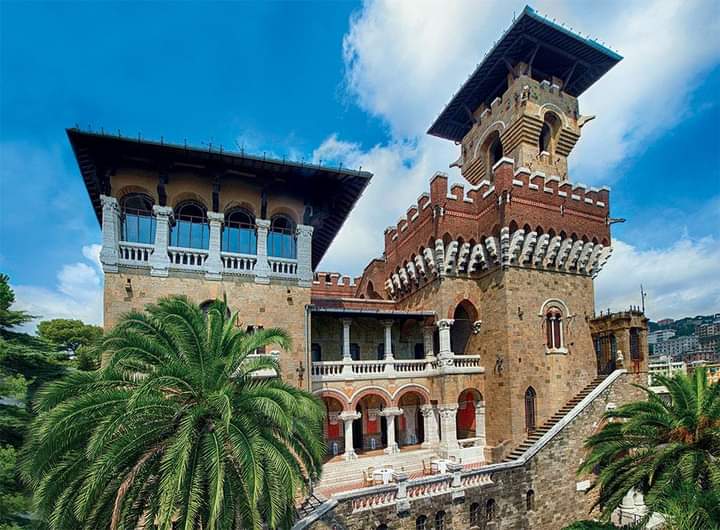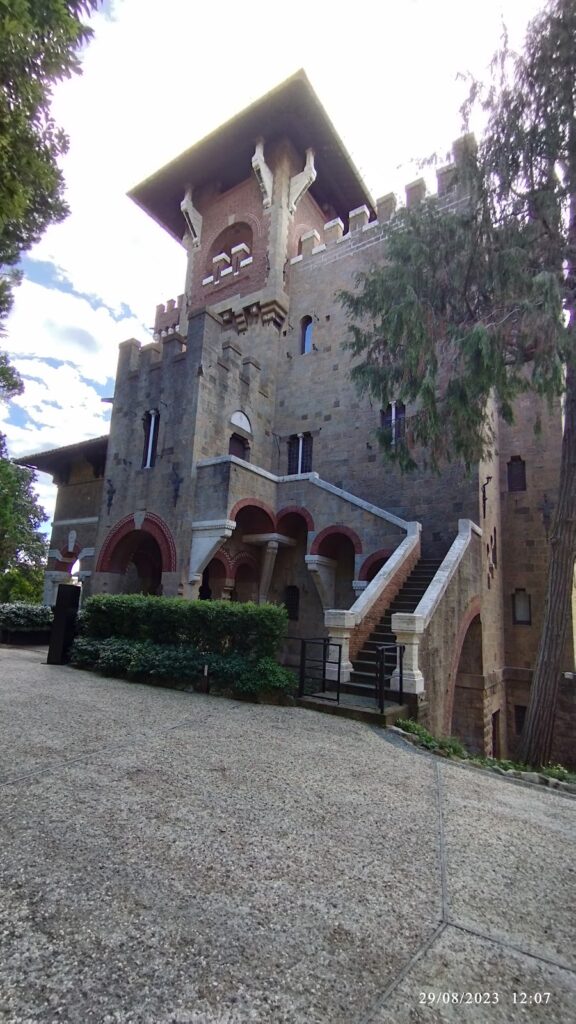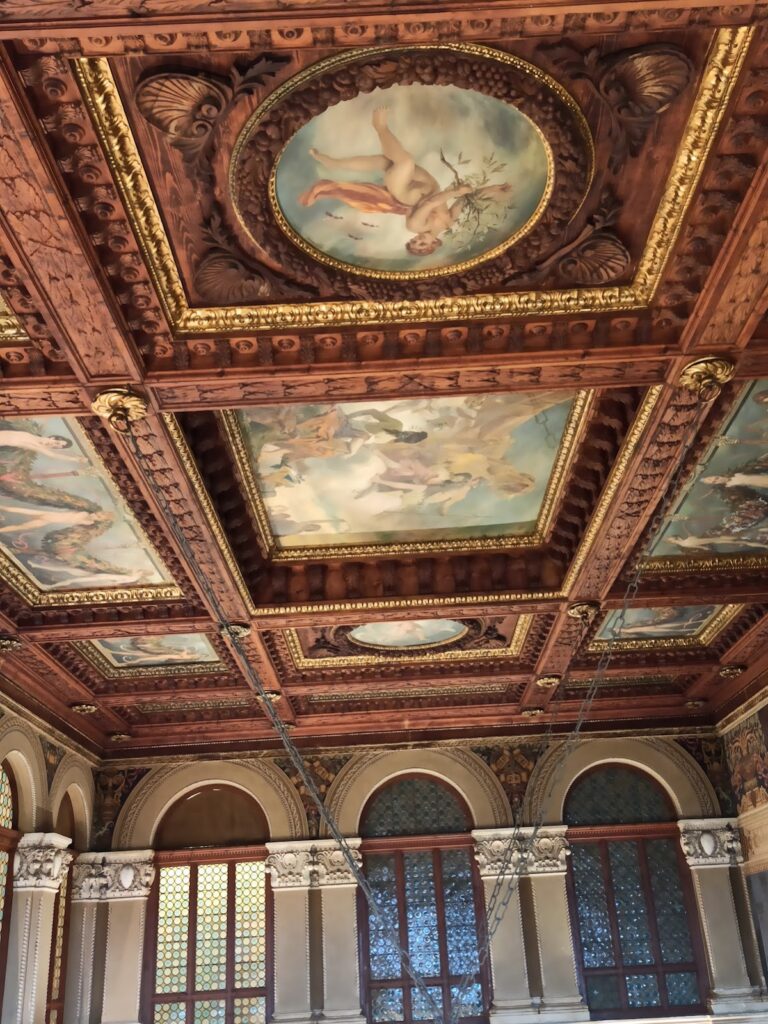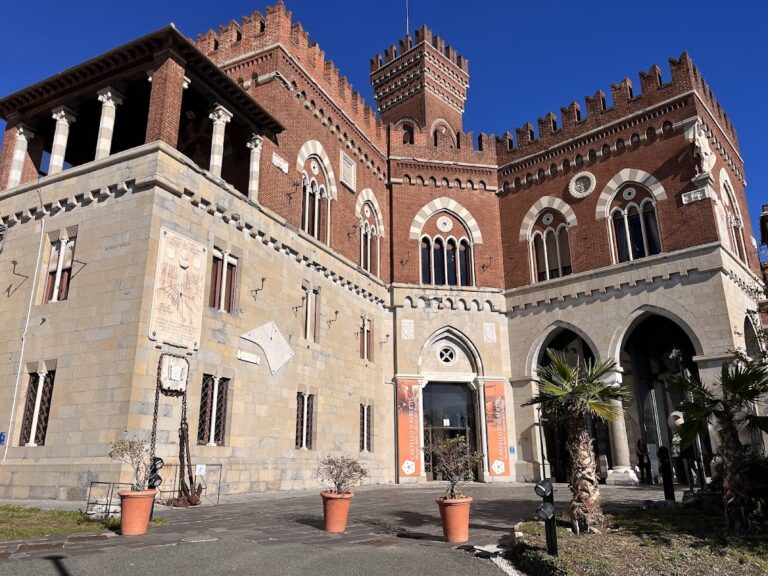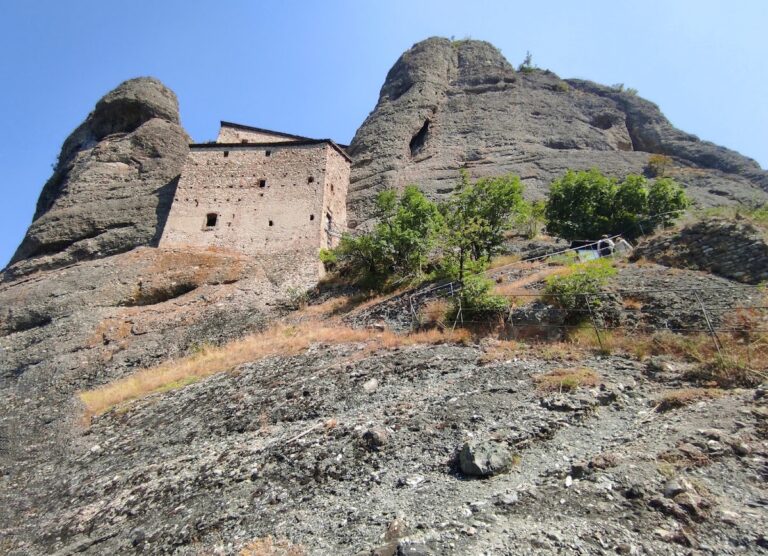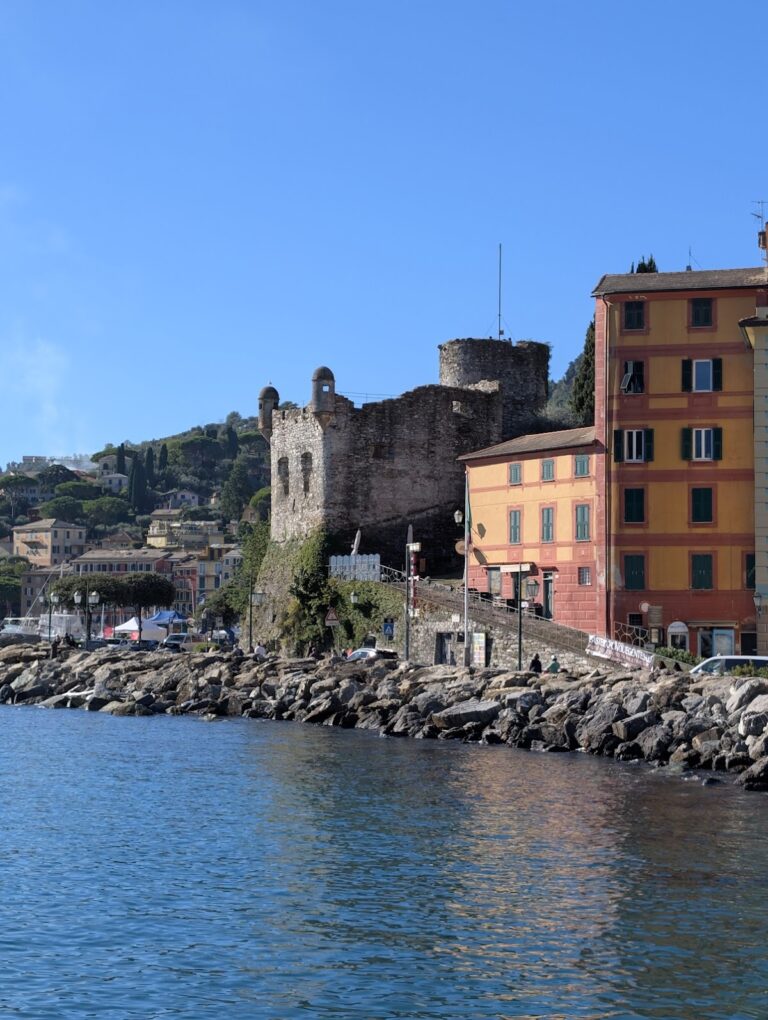Castello Bruzzo: An Early 20th-Century Villa in Genoa, Italy
Visitor Information
Google Rating: 4.6
Popularity: Low
Google Maps: View on Google Maps
Official Website: castellobruzzo.it
Country: Italy
Civilization: Unclassified
Remains: Military
History
Castello Bruzzo is located in the hills of Genoa, Italy, within the municipality of Genoa. This villa was constructed in the early 20th century during a period when the area saw the development of several notable residences that took advantage of panoramic views. The project was initiated in 1904 by engineer Pietro Micheli, who commissioned the design of the villa to the architect Gino Coppedè. The villa’s original name was Villa Micheli, reflecting its first owner.
During its conception, Castello Bruzzo was directly inspired by Castello Mackenzie, another notable Genoese villa designed by Coppedè. The site became part of a cluster of elegant homes built roughly between the late 19th and early 20th centuries, with contemporaries such as Villino Govi and Villino Flavia completed in 1903 and 1904 respectively. Engineer Giuseppe Predasso also contributed to the villa’s design, showcasing collaborative efforts among professionals in the region at that time.
A significant change occurred in 1912 when the villa was acquired by Lorenzo Bruzzo. Under Bruzzo’s ownership, an additional floor was added to the building, indicating both an expansion and an adaptation of the original structure. The villa’s importance and architectural details were sufficiently recognized to be included by Gino Coppedè himself in his 1914 publication, which documents castles and villas in a Renaissance-style character and includes photographs of Castello Bruzzo.
Remains
The villa is organized around a central, quadrangular main block designed to resemble a castle, accentuated by a tall tower crowned with a pavilion roof. The main block is accompanied by additional wings that extend from it, creating a complex and varied structure. The external walls are notable for their gray stone ashlar construction, interspersed with brick detailing and decorative reliefs carved in marble. Wrought iron contributes to the decoration with elements such as torch holders, rings, and flagpole supports, adding texture and ornamental interest to the facade.
One distinctive exterior feature is a southern loggia with vaulted ceilings embellished by frescoes. These frescoes present allegorical representations of the twelve zodiac signs, surrounded by stylized floral decorations, integrating artistic symbolism with architectural space. Inside the villa, the central hall serves as a centerpiece. It houses a large stone fireplace inscribed with the Latin phrase “optima pandens,” which can be translated as “that shows excellent things.” Above the fireplace hangs a roundel depicting Saint George slaying the dragon, a classic Christian symbol of the triumph over evil.
The hall’s walls are richly adorned with frescoes featuring ribbons, trophies, vegetal branches, and grotesque motifs. Large stained-glass windows framed in carved wood open visually toward an upper-floor corridor, allowing light to connect different parts of the interior. The wooden ceiling is coffered, meaning it consists of sunken panels separated by carved beams decorated with gilded round ornaments known as paterae. Inside these coffers are frescoes of putti (cherubic figures), some holding festoons or scrolls. One such fresco bears the date 1913 and the initials L.B., which stand for Lorenzo Bruzzo, linking the decoration to the villa’s later phase of ownership.
At the ceiling’s center is a larger _lacunar_ fresco, depicting “The Triumph of Industry and Commerce,” painted by Luigi Morgari. This artwork forms a focal point from which a bronze chandelier is suspended, combining artistic and functional elements. Another room, designated the “room of musicians and dances,” originally served as a games room. It features a coffered wooden ceiling and wall frescoes by Enrico Bernardi that portray four elegant scenes with musicians and maidens. These images are framed by panels adorned with stylized flowers and ribbons, emphasizing themes of art and leisure.
The “room of stylized roses” once functioned as a library and displays walls painted with recurring rose patterns on a blue background above a green-painted wooden wainscoting. Within this space is a large pink granite fireplace surrounded by a richly decorated wooden beam ceiling. Wall frescoes include lattice-like patterns of branches and fruits set against a dark red background, centered by a stylized griffin figure. A frieze—a decorative horizontal band—between the ceiling and walls illustrates garlands, leafy festoons, stylized grid motifs associated with the martyrdom of Saint Lawrence, and roundels inscribed with Latin mottos such as “ferreo labore” (meaning “through iron labor”) and “ex igni resurgo” (“I rise again from fire”).
Together, these features demonstrate the villa’s elaborate aesthetic and symbolic program, preserved in situ with frescoes, carvings, and ornamental details that mark it as a distinctive example of early 20th-century villa design in Genoa.
